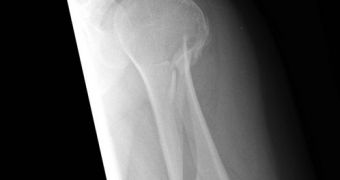A new computer model, experimented on animals, shows why five to ten percent of bone fractures do not heal properly, and also how these cases can be treated and the healing process restarted.
In bone fracture cases, 5 to 10 percent of the healing processes do not repair the bone and only lead to fractures that fail to heal.
When the healing process goes wrong, it forms delayed unions and even non-unions, Science Daily reports.
Scientists carried out research on an animal model mimicking a clinical non-union situation and, in parallel, they elaborated a mathematical model, that was developed to study the way a normal fracture heals.
By using this combination, researchers at the Katholieke Universiteit Leuven (Belgium), Edinburgh University (United Kingdom), University of Liège (Belgium) and Oxford University (United Kingdom) carried out an investigation to solve this health problem.
To give an example, the scientists looked for a way of potentially treating the non-unions by transplanting cells from the bone marrow to the fractured location.
To make sure the result would be viable, this approach was also tested in a pilot animal experiment, and, in addition, the scientists used a mathematical model that could explain some of the more unexpected experimental observations.
As a result, both the experiments and the simulations showed that bone marrow helps the formation of a bony union between the fractured bone ends.
This research proves that combining a mathematical model with an experimental research adds more value to the study.
Furthermore, it shows the potential of using cell transplantation, which was successful in the treatment of non-unions.
The results of the model were published yesterday in the open-access journal PLoS Computational Biology.
This innovation could benefit the aging population in which the occurrence of bone fractures is expected to increase seriously in the near future.

 14 DAY TRIAL //
14 DAY TRIAL //